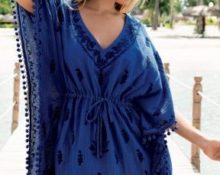A leather jacket is one of the most popular items in any person's wardrobe. This stylish item goes well with absolutely any item in your basic wardrobe, both on a walk and at work.
 When faced with the question of how to make a women's leather jacket yourself, it can be a little scary. However, this task is not so overwhelming if you look at it. All you need for the job is a pattern, which is easy to make yourself, and a sewing machine to ensure that all the seams are neat. Since a leather jacket is an element of outerwear, any errors will actually be visible.
When faced with the question of how to make a women's leather jacket yourself, it can be a little scary. However, this task is not so overwhelming if you look at it. All you need for the job is a pattern, which is easy to make yourself, and a sewing machine to ensure that all the seams are neat. Since a leather jacket is an element of outerwear, any errors will actually be visible.
Important! Be sure to decide on the decoration of the jacket before starting work.
Cutting and sewing a leather jacket with your own hands
Leather as a material has excellent properties that allow the product to fit well, be universally suitable for various clothes and serve for a much longer period.
Required Items To sew a leather jacket yourself:
- Material: leather or leather substitute.
- Zippers, belts, rivets.
- Sewing machine.
- Non-woven fabric.
- Scissors, threads according to color.
- Pattern.
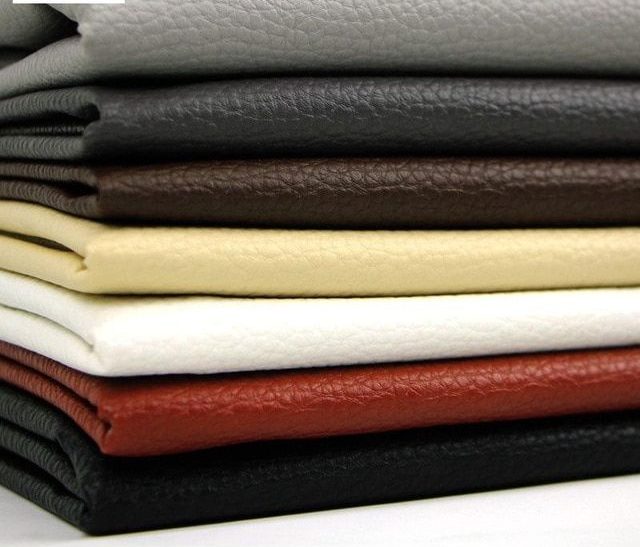 Products made from genuine leather are highly valued, but you can also make a jacket from a leather substitute. Such a product will look very good when finished, and for beginning craftsmen it will be a great way to practice before creating leather products.
Products made from genuine leather are highly valued, but you can also make a jacket from a leather substitute. Such a product will look very good when finished, and for beginning craftsmen it will be a great way to practice before creating leather products.
Selection of model and materials
Sewing a leather jacket can be quite simple, the main thing is to accurately decide on the model at the very beginning. There are several common types of jackets: classic, youth and biker (leather jackets).
When working with leather, you should remember several important rules:
- For easier sliding on the material, you can use sunflower oil.
- It is better to use the lining for a leather jacket from natural materials, thus avoiding the sauna effect when worn.
- To glue individual elements, you can use non-woven glue.
- You can use chalk to make marks when creating a pattern; it can then be easily washed off with a regular soft cloth dipped in water.
In the next master class, we will look at the construction and sewing of a fashionable leather jacket, which has long held a leading position in the wardrobes of people of all ages.
Model: 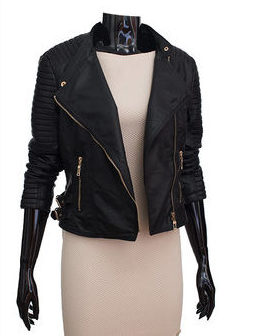
Pattern
This stylish jacket is a perfect addition to any wardrobe, as it can be combined with both trousers and dresses.Designers recommend choosing calm, dark colors for sewing a classic biker jacket, however, absolutely nothing prevents you from decorating it with decorative elements.
Reference! Making a pattern is quite an interesting and time-consuming process. You can purchase it from various online resources or build it yourself.
We decided to carry out the calculations ourselves and describe this process in detail.
The construction of the pattern takes place in several stages:
- First you need to take measurements of size 48: Half neck circumference (19.5), 1/2 chest circumference (48), sleeve length (60), product length (78).
- On paper, mark a 90 degree angle with point A at its apex.
- From point A to the right, set aside the PoG size with a fit allowance of +15 cm (48+15=63 cm) and mark B.
- From A down, draw a line 78 cm +2 and mark H (AH = 80) and draw horizontally from H, and from B vertically 2 lines. Mark the crossing point B1.
- Marking of the chest line: from A 1/3 of half the chest circumference +8 cm, mark as G (AG=48/3+8=24). To the right side of G, draw parallel to AB and mark G1 at the intersection with the vertical line from B.
- For the wide side of the back along the chest line from G, mark 1/3 PoG + 7 cm, mark g (48/3 + 7 = 23 cm). From this mark upward, draw parallel to the line of the back, and at the point of intersection with AB, mark C.
- The size of the wide part of the armhole along the chest line: from g, draw 1/4 PoG + 5 cm - point g1 (48/4 + 5 = 17 cm). Up from r1, draw a line of parallel to the middle part of the front of C1.
- The wide part of the sprout: along AB to the right side of A 1/8 PoG + 1.5 cm a (48/8 + 1.5 = 7.5).
- High part of the sprout: Draw a line up from a, which is equal to 1/2 of the wide part of the sprout - 1 cm, mark as a1 (7.5/2-1 = 2.8 cm), a, a1 and A combine.
- Bevel for the shoulder along the back: From C, put 2 cm down and mark point.
- The wide side of the shoulder for the back: connect a1 and p, on the segment g g1, divide it into 2 equal parts and place O. From g, draw a line of 3.5 cm to divide the angle in half g2.
- I will unite the back armhole at points p1, p2, r2 and O.
- We build the wide part of the neckline along the front as follows: from point B, set aside 1/8 PoG + 1.5 cm and mark B1 (BB1 = 48/8 + 1.5 = 7.5 cm). Draw a line 7.5 cm down from B. Mark it as b. Connect B1 and b.
- Bevel for the front shoulder: set aside 2.5 cm from C1 and mark p3.
- Armhole: combine p4, p5, g3 and O.
- To build a sleeve, you need to measure a rectangle with a height A of 60 cm + 4 cm for seams and freedom of fit, and width AB = PoG + 3 = 48 + 3 = 51 cm.
- The sleeve cap is built on PoG/8+2 and is equal to 8. Its center is exactly in the middle of 25.5 cm.
Thus, according to the cutting pattern on the artificial leather canvas, the following should be obtained:
Sewing steps
After the pattern is ready and all the elements have been cut using leatherette fabric, you need to thread them together:
- You should start by sewing on the pockets. To do this, attach the rectangular piece to the location of the pocket from the wrong side. It is recommended to treat the pocket right away - locks, rivets or other decorative elements that you like.
- After this, you need to connect the shoulder seams.
- Sew the collar blank into the neckline.
- Next, you should process the sleeves and cuffs.
- Connect at the sides.
- Hem the bottom of the jacket.
Attention! Keep in mind that sloppy seams or shoulder seams on a finished jacket can be covered with patches, straps or rivets, so don't worry about there being a slight error somewhere.
Thus, we are convinced that it is quite possible to sew a leather jacket yourself! However, this process requires a certain perseverance and patience.



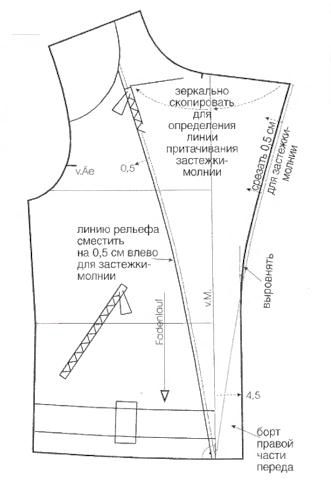
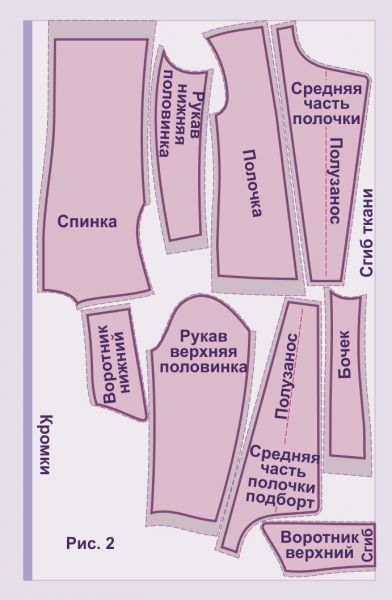
 0
0